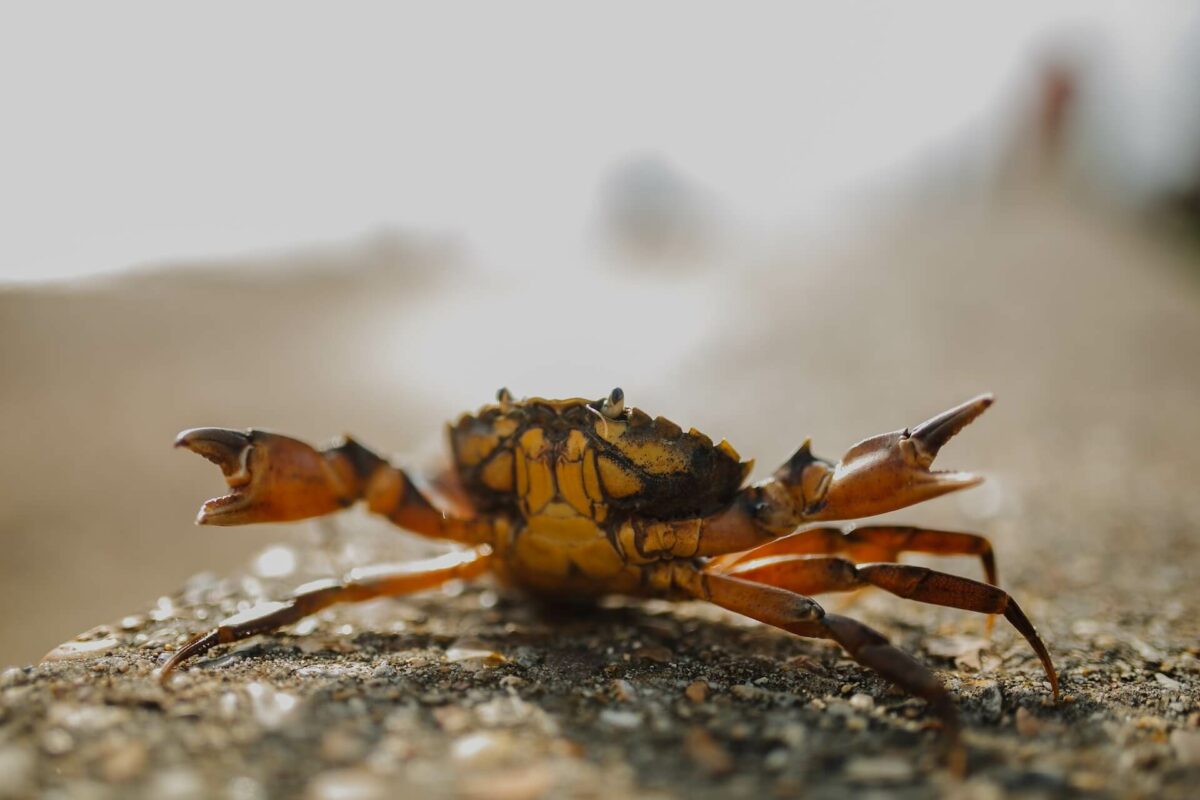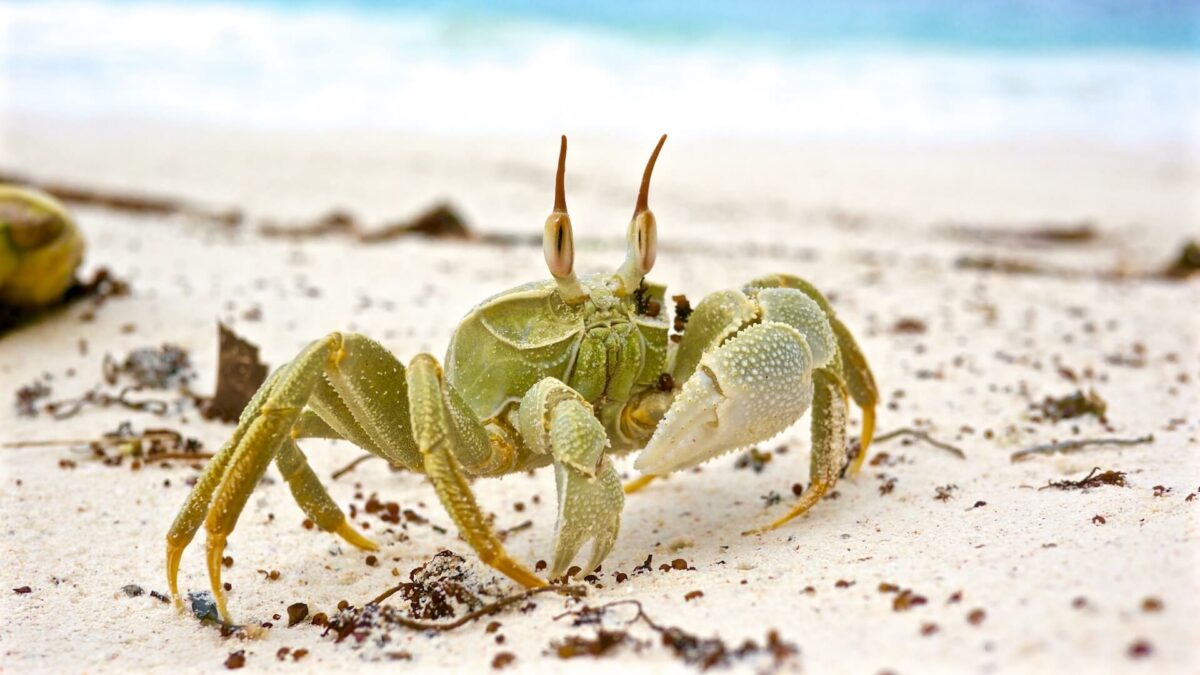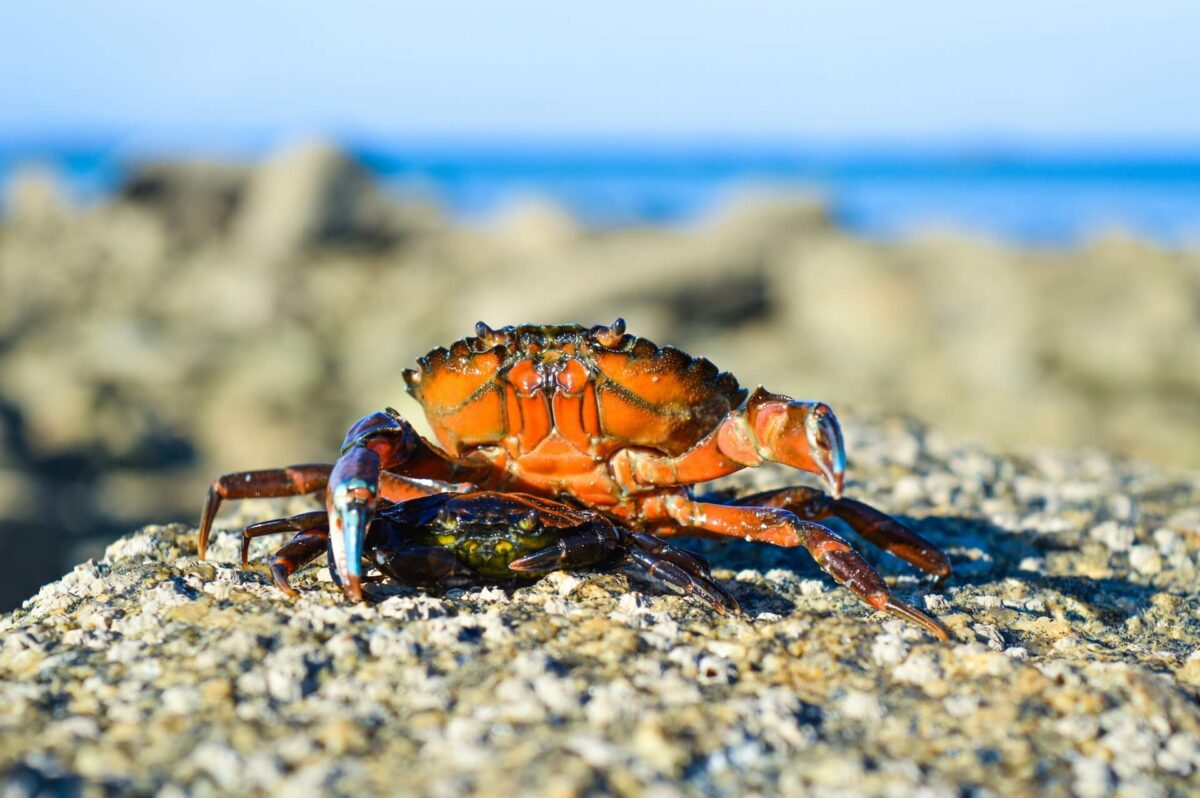Crabs are fascinating creatures that can be found in oceans, freshwaters, and around coastlines all around the world.
Some live on land and many miles from water, whilst other species live far out in the ocean and in the dark unexplored depths.
Their unique appearance and behavior make them a hot topic for marine biologists, but there’s often debate around their classification, and specifically, are crabs invertebrates?
It’s a question that comes up frequently when discussing these creatures, and it’s one that we’re going to discuss in depth today.
So if this question has ever crossed your mind and you’re curious to learn more about crab anatomy, stick around as you’re in the right place.
What Defines An Invertebrate?
By definition, an invertebrate is a group of animals that neither possess nor develop a vertebral column, also known as a backbone.
Instead, invertebrates rely on other structural support systems such as hard exoskeletons, hydrostatic skeletons, shells, or soft bodies.
Starfish, jellyfish, octopuses, squid, and lobsters are just a few examples of marine life that are invertebrates.

Invertebrates are the largest group of animals in the animal kingdom, with national geographic stating that 97 percent of all animals are classified under this group.
Whilst invertebrates lack a backbone, they often have complex nervous systems, digestive systems, and respiratory systems that allow them to perform a variety of functions and behaviors.
Are Crabs Invertebrates?
YES, crabs are invertebrates as they do not have a backbone or vertebral column. Instead, they have an exoskeleton that’s made of chitin.
It’s a hard and protective layer that provides structural support for their bodies and keeps their soft internal organs protected.
A crab’s exoskeleton is rigid and does not grow, which means the crab must go through a molting process periodically to shed their old exoskeleton.
Crabs are crustaceans which are a large and diverse group of arthropods that include lobsters, shrimp, krill, barnacles, and more.
Crustaceans are a subcategory of invertebrates that are closely related to insects and spiders.
Like many insects and spiders, crabs have much more than four limbs. In fact, they have ten limbs, with the front pair being a set of strong gripping claws and the remaining eight used for walking.
The Benefits Of Being An Invertebrate
There are numerous benefits to being an invertebrate and given that they’re the most abundant type of animal on earth, having no backbone is clearly working for these animals.
Firstly, invertebrates are incredibly adaptable and can adapt to almost any environment on earth, including extreme conditions at the bottom of the ocean and even in hot springs.
They can thrive in conditions where other animals would not be able to, which helps them be so successful in many environments.
Their reproductive process is often complex, with many crabs and other invertebrates laying millions of eggs at a single time.
This allows them to have lots of young which helps to keep their species thriving and plays a key role in many ecosystems.
Invertebrates can also have a range of different feeding strategies, such as predation, scavenging, filter feeding, and more.
Most invertebrates are highly flexible too which allows them to get into spaces where other animals can’t
They’re often excellent at burrowing, crawling, swimming, and even flying, allowing them to stay out of harm’s way.
More On Crab Anatomy
The anatomy of crabs is truly a fascinating one as they have so many distinct features that are specialized to their unique lifestyles.
As discussed, crabs have a hard exoskeleton that provides their soft internal organs with protection, but when they grow this exoskeleton must be shed, and a new one forms.
They have two pairs of antennae which are sensory organs that allow the crab to navigate the ocean and detect food, predators, and mates.
The two front legs of a crab are modified into claws, which are used for a variety of reasons such as hunting, defense, and even mating.
Unlike marine mammals, crabs have gills that allow them to extract oxygen directly from the water and breathe, meaning they don’t need to surface for air.
This allows crabs to live in some of the deepest parts of the ocean and means that they can stay underwater indefinitely.

Their digestive system is made up of a mouth, stomach, and intestines and they’re mostly omnivores that feed on plant matter and meat.
The reproductive system of a crab is remarkable, and as mentioned earlier allows them to have broods of sometimes millions of eggs at a time.
Overall, the anatomy of a crab is highly specialized for their unique lifestyles and allows them to adapt to many different environments, whether on land, in the ocean, or in rockpools.
Wrapping Up
To sum up, YES, crabs are invertebrates. Like all invertebrates, crabs lack a backbone or vertebral column and instead have a soft exoskeleton that provides them with support.
Crabs are truly unique in a number of ways, and their anatomy as a whole is a fascinating one that sets them apart from all other animals.
They’re crustaceans that belong to the subphylum Crustacea, alongside fish lice, krill, decapods, seed shrimp, and more.
Crabs are fascinating that can adapt to a wide range of environments which is why they inhabit both land and ocean.
Thanks for taking the time to learn more about crabs and their classification today, I truly hope you’ve enjoyed this post and learned something new and interesting about the world of crabs.
See you in the next one!

Hi, I’m George – the founder of MarinePatch. I created this blog as marine wildlife has been my passion for many years. I’ve spent over a decade in the marine wildlife industry and spent years out in the field conducting research. In today’s modern world, an online blog is the best place for me to share my findings and reach as many people as possible to help educate and inspire others. Enjoy your time here and you’re welcome back anytime!

